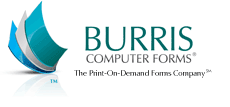5 Ways To Be Green With Your Paper Usage
by Chelsea Camper | Last Updated December 30, 2015Paper is one of the most talked about items when the conversation turns to recycling. Why? Because it’s everywhere! Right now I look around my desk and I see a box of tissues, my note book, printed out calendars, a magazine, scrap paper for quick notes, a picture of one of my friends and, a large calendar with a pretty pony, and many more paper related products. It’s all around us, we use it every day and we use a lot of it.
Even when you use a lot of paper, you can still be environmentally conscious. Outside of recycling paper, here are six ways you can be environment-smart with your paper usage:
1. Integrate your Direct Mail with Online Media
- When you send out a direct mail campaign utilize QR Codes to drive traffic to your online sources where you can further educate your audience on the offer without having to follow up with a second direct mail campaign.
- You can use PURLs (Personalized URLs) to customize your direct mail campaigns to your audience. Instead of sending them a survey to send back, send them a QR Code with a PURL that takes them to your web site to fill out the survey.
2. Use Recycled Paper
- By using recycled paper you can help cut down on fresh trees being used. Sometimes recycled paper can be a little more expensive, but it’s worth an extra couple of bucks to help the environment.
- Here at Burris Computer Forms we offer a recycled paper option for a good chunk of our products. Any time you see the green recycling triangle (
) beside a product name you know that it has at least 10% post consumer recycled content. Once you click into the product page you can see just how much recycled content is used in the product; from 10% up to 100%.
3. Reuse Scrap Paper
- Scrap paper is just paper that was printed on but for whatever reason just didn’t make the cut. Perhaps the printer started running out of ink or only part of your print was actually printed. You can use the scrap paper for taking meeting notes or give them to your design and marketing departments; we use a lot of paper for sketching out designs and marketing campaigns.
- If your marketing and design departments have enough scrap paper to mess around with, you can use the scrap paper to do test prints before you run the full print job. Print out 20-30 pages of your print job on scrap paper to make sure the printer is working properly and has enough ink; then swap paper and run the actual job.
4. Print Multiple Pages on One Sheet
- Sometimes during research you run across a great PDF that you want to print out to display at your next meeting. Instead of printing that 16 page PDF on 16 separate sheets, print multiple sheets per page. Even if you just did two per page that would knock the sheets down from 16 to 8. You could save even more paper by printing 4 pages per sheet to knock it down to 4 sheets. Just make sure you can still read it!
- You can also print out multiple sheets per page on recycled or scrap paper to heavily reduce your impact on the environment. Then when you’re done with the sheets, recycle them!
5. Keep Overrun as Low as Possible
- An overrun happens when you hit the number of sheets you actually need and then print a little extra. That little extra is referred to as the “overrun.” When your print your own forms you can have complete control over the overrun and make sure that you don’t go too far over the number of sheets you actually need.
- If you’re worried about accidentally printing a large overrun you can try printing in blocks of 50-100 to help keep track of how many were printed. Once you’ve hit your number of sheets needed you can decided if you need to print a few extra just in case some prints didn’t come out exactly how you wanted them.
How do you save on paper?
Image: ell-r-brown

